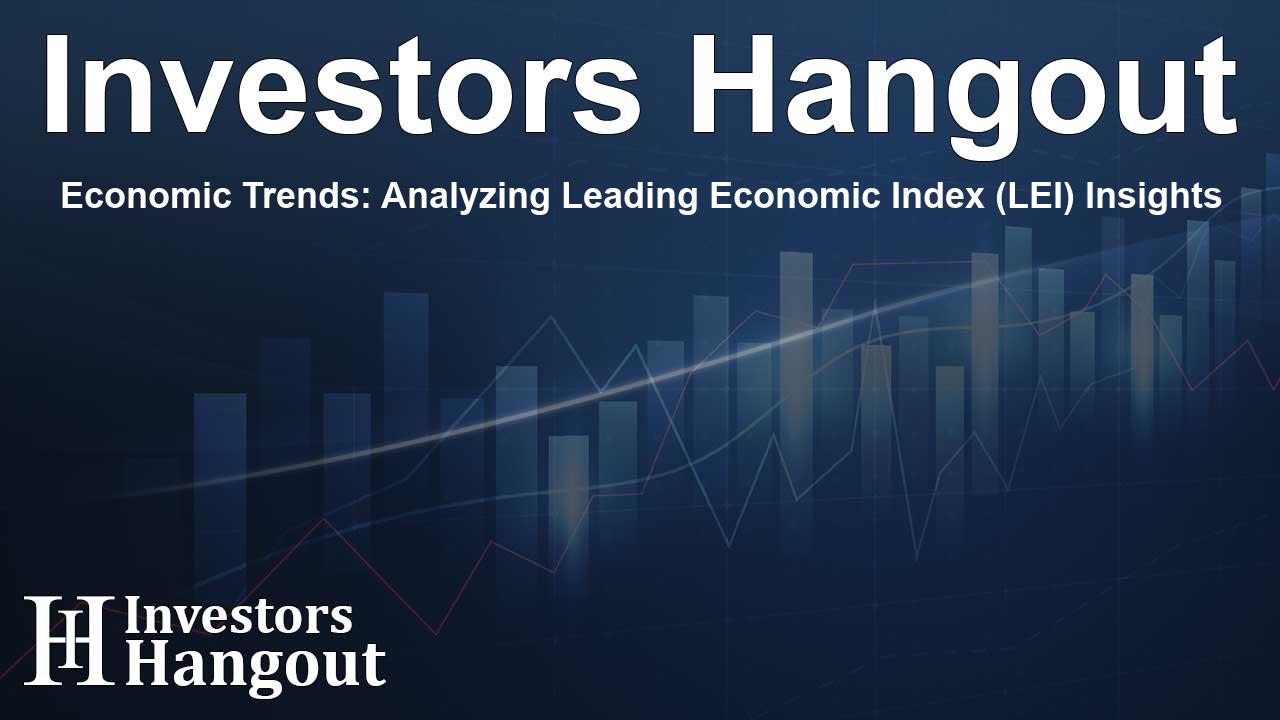Economic Trends: Analyzing Leading Economic Index (LEI) Insights

Understanding the Decline of the Leading Economic Index
The Leading Economic Index (LEI) serves as a vital tool for predicting future economic activity. Recently, the LEI for the US experienced a decrease of 0.3%, bringing its value to 101.5 as of January. This decline came after a slight increase of 0.1% in December, which was later revised from an earlier estimate of decline. Over the last six months, the LEI has recorded a total decline of 0.9%, a notable improvement compared to the 1.7% drop observed in the preceding half-year period.
Insights from Economic Experts
Justyna Zabinska-La Monica, a Senior Manager at The Conference Board, commented on this trend. She explained that the decrease in the LEI in January was largely influenced by a drop in consumer optimism regarding future business conditions. The manufacturing sector also saw reduced weekly hours, further contributing to the month’s negative outcome. Despite these challenges, there are signs of stabilization in manufacturing orders and positive contributions from the yield spread for the first time since late 2022. It is significant that only four out of the LEI's ten components turned negative during January, and both the six-month and annual growth rates of the LEI continue to show positive trends. This could be an indication of less severe obstacles to economic activity in the near future.
Looking Ahead: Economic Forecasts
In light of the current economic climate, analysts are projecting a growth of 2.3% in real GDP for the US in the upcoming fiscal year. These expectations suggest a more robust economic performance in the first half of the year.
Analyzing the Coincident Economic Index
The Coincident Economic Index (CEI) also showcased positive movement, rising by 0.3% to settle at 114.3 as of January 2025, following a similar uptick in December. This further emphasizes the ongoing improvements seen in the six-month period spanning July to January, where the CEI noted a growth of 1.0%, closely aligned with its previous growth rate. The four essential indicators that constitute the CEI—payroll employment, personal income less transfer payments, manufacturing and trade sales, and industrial production—all recorded enhancements in January. The most substantial positive impact was attributed to industrial production.
The Role of the Lagging Economic Index
The Lagging Economic Index (LAG) also reflected a positive change, increasing by 0.5% to 119.3 as of January 2025, marking the first positive change in six months. These figures illustrate the valuable insights these economic indexes offer in gauging current and future economic conditions.
Comprehending Economic Indexes
The LEI and CEI are critical tools for understanding economic cycles. These composite indexes are designed to pinpoint significant changes in economic activity, providing a clear view of the economy’s different phases. The LEI is especially focused on anticipating future shifts in the business environment, typically leading by about seven months. Meanwhile, the CEI reflects the existing economic landscape and closely correlates with real GDP.
Components of the Leading Economic Index
The LEI is composed of ten indicators, which include factors like average weekly hours in manufacturing, initial jobless claims, manufacturers' new orders, and consumer expectations. Each of these indicators offers insights into various dimensions of the economy, making them essential for understanding market dynamics.
Components of the Coincident Economic Index
Similarly, the CEI's structure comprises four indicators: payroll employment, personal income less transfer payments, manufacturing and trade sales, and industrial production. Together, these components provide a comprehensive overview of the current economic conditions.
Frequently Asked Questions
What does a decline in the LEI indicate?
A decline in the LEI suggests a potential slowdown in economic activity, reflecting decreased consumer confidence and changes in hiring patterns.
How does the LEI predict economic changes?
The LEI is designed to forecast turning points in the business cycle by analyzing a range of economic indicators, usually leading by about seven months.
What is the importance of the CEI?
The Coincident Economic Index provides a snapshot of current economic activity and is closely tied to the real GDP, helping analysts assess the health of the economy.
What components are included in the Leading Economic Index?
The LEI comprises indicators such as average weekly hours in manufacturing and manufacturers' new orders, among others, that signal future economic activity.
Why is the Lagging Economic Index useful?
The Lagging Economic Index provides insights on how economic trends have impacted the overall economic conditions over a specified period, confirming changes in the economic environment.
About The Author
Contact Lucas Young privately here. Or send an email with ATTN: Lucas Young as the subject to contact@investorshangout.com.
About Investors Hangout
Investors Hangout is a leading online stock forum for financial discussion and learning, offering a wide range of free tools and resources. It draws in traders of all levels, who exchange market knowledge, investigate trading tactics, and keep an eye on industry developments in real time. Featuring financial articles, stock message boards, quotes, charts, company profiles, and live news updates. Through cooperative learning and a wealth of informational resources, it helps users from novices creating their first portfolios to experts honing their techniques. Join Investors Hangout today: https://investorshangout.com/
The content of this article is based on factual, publicly available information and does not represent legal, financial, or investment advice. Investors Hangout does not offer financial advice, and the author is not a licensed financial advisor. Consult a qualified advisor before making any financial or investment decisions based on this article. This article should not be considered advice to purchase, sell, or hold any securities or other investments. If any of the material provided here is inaccurate, please contact us for corrections.
